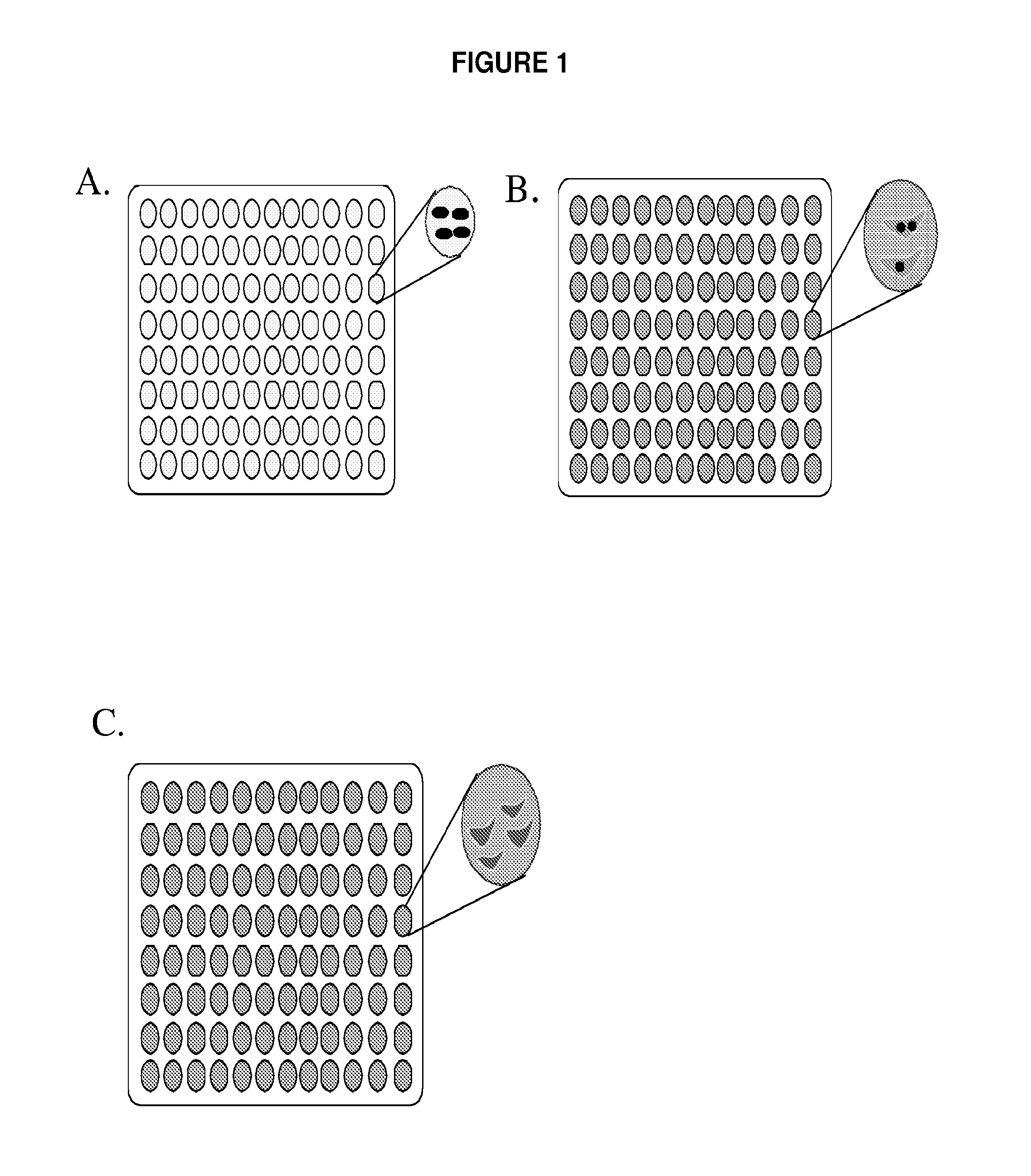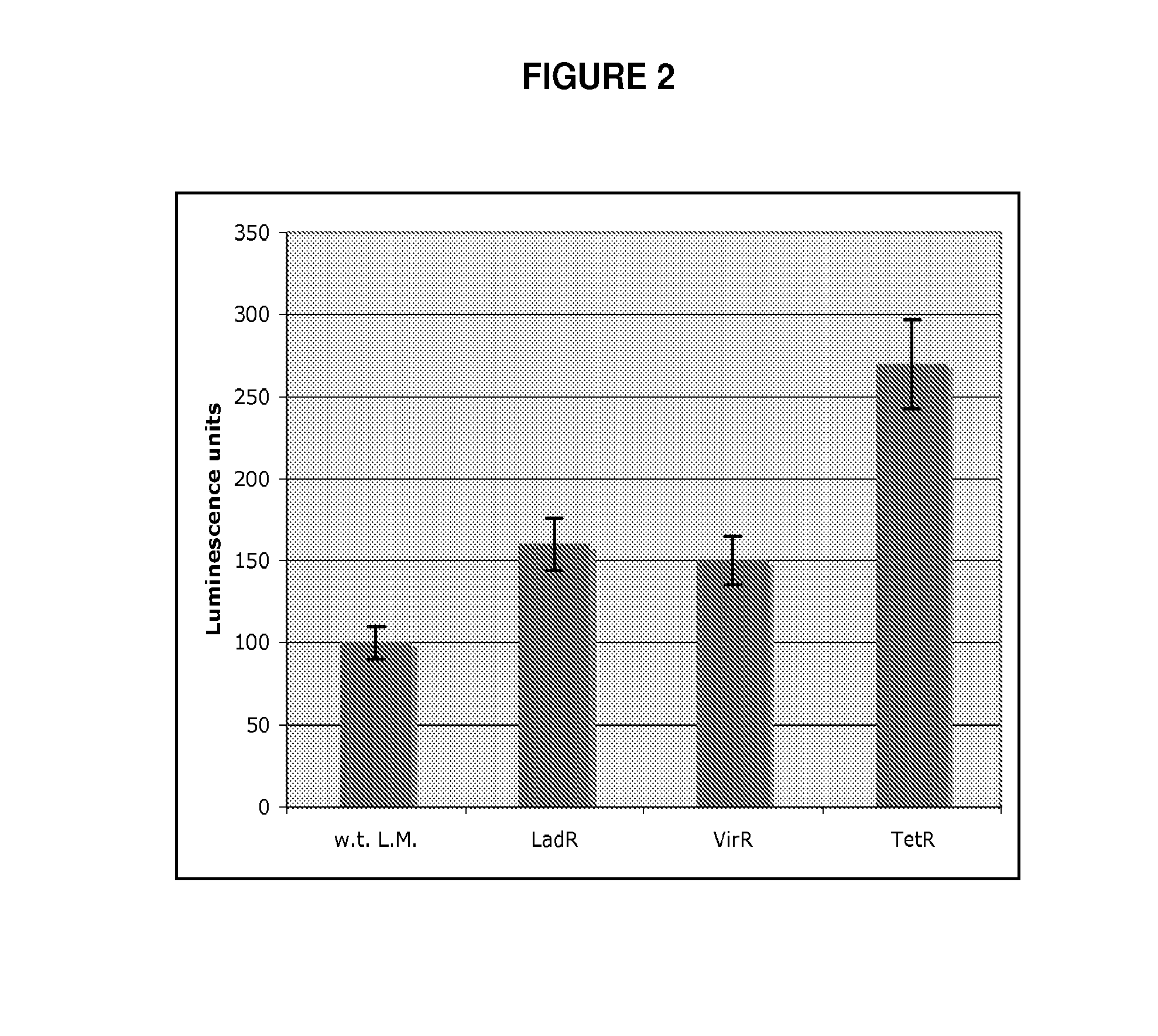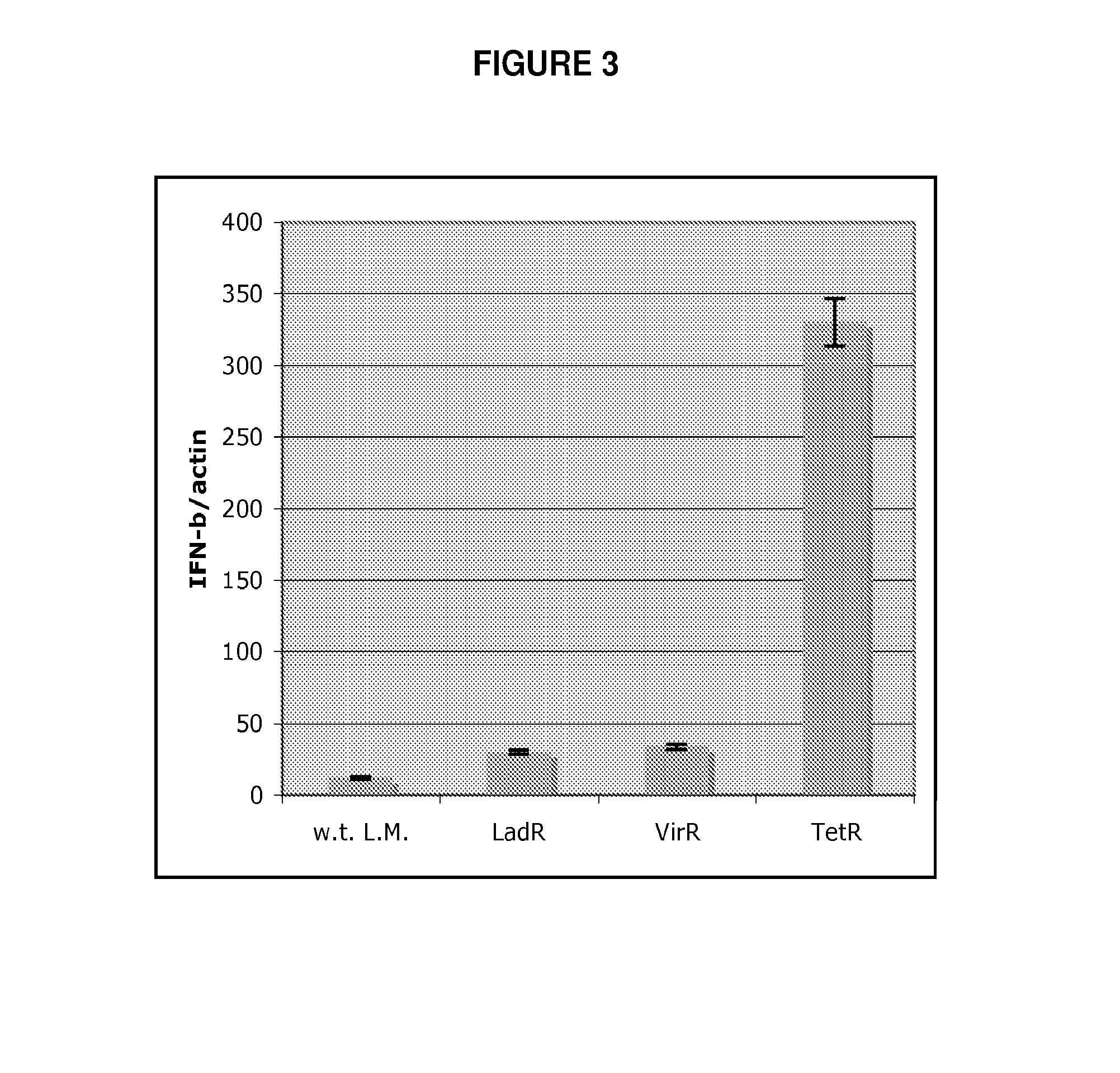Interferon-β production modulating Listeria strains and methods for using same
a technology of interferon- and listeria, which is applied in the field of interferon- production modulation listeria strains, can solve the problems of limiting the utility of the protein in its purified form, lack of interferon stability in solutions and other products, and affecting the quality of the protein, so as to increase reduce the production of interferon-
- Summary
- Abstract
- Description
- Claims
- Application Information
AI Technical Summary
Benefits of technology
Problems solved by technology
Method used
Image
Examples
example 1
Generation of Listeria monocytogenes Transcription Regulator Gene Mutants and Characterization of Role in Modulating Interferon-β Expression
Mutant Libraries
[0103]Generation of Listeria monocytogenes mutant libraries using transposon Tn917-LTV3 was previously described (Camilli et al., 1990). Nine independent libraries were generated by A. Camilli, from which 8 libraries were screened in this study. These libraries are designated as Libraries 910-918 and are part of the Portnoy culture collection.
[0104]Eight independent L. monocytogenes Tn917-LTV3-transposon insertion libraries, were plated to single colonies on BHI agar plates and then patched (single colony per well) to 96 well plates (FIG. 1, panel A). A total of 4500 bacterial insertion mutants were grown on BHI media in 96 well plates and were frozen with glycerol for further infection experiments. Bone marrow-derived macrophages from C57B1 / 6 mice femurs were prepared as described and grown for six days and frozen ...
example 2
Listeria monocytogenes Multidrug Resistance Transporters Activate a Cytosolic Surveillance Pathway of Innate Immunity
[0112]To address the question of how L. monocytogenes activates the host cytosolic surveillance system, a L. monocytogenes Tn917 transposon library (Camilli et al. J Bacteriol 172, 3738-44 (1990)) was screened for mutants that exhibited an enhanced or diminished Type I IFN response upon infection of macrophages. Approximately 5000 L. monocytogenes Tn917 mutants were used to infect bone marrow derived macrophages (BMM) in 96 well plates. The amount of Type I interferon (i.e. IFN-β and / or IFN-α) secreted by macrophages during infection was measured by transferring macrophage culture supernatant onto a Type I interferon reporter cell line, that produces luciferase in response to Type I interferon (Jiang et al. Nat Immunol 6, 565-70 (2005)). 14 mutants that induced altered induction of Type I interferon in comparison to w.t. bacteria were identified. Among these, three mu...
example 3
Listeria monocytogenes Mutants in a Multidrug Resistance Transporter Gene and Multidrug Resistance Transporter Gene Transcriptional Regulators Induce an Altered Type I Interferon Response
[0155]Human type I interferons (IFNs) bind to a specific cell surface receptor complex known as the IFN-α receptor (IFNAR) that consists of IFNAR1 and IFNAR2 chains. Homologous molecules to type I IFNs are found in many species, including most mammals, and some have been identified in birds, reptiles, amphibians and fish species (Schultz et al., Developmental and Comparative Immunology, Volume 28, pages 499-508). IFN-α and IFN-β are secreted by many cell types including lymphocytes (natural killer (NK) cells, B-cells and T-cells), macrophages, fibroblasts, endothelial cells, osteoblasts and others. They stimulate both macrophages and NK cells to elicit an anti-viral response, and are also active against tumors.
[0156]Mice lacking the type I interferon receptor are resistant to infection with wild typ...
PUM
| Property | Measurement | Unit |
|---|---|---|
| time | aaaaa | aaaaa |
| time | aaaaa | aaaaa |
| concentration | aaaaa | aaaaa |
Abstract
Description
Claims
Application Information
 Login to View More
Login to View More - R&D
- Intellectual Property
- Life Sciences
- Materials
- Tech Scout
- Unparalleled Data Quality
- Higher Quality Content
- 60% Fewer Hallucinations
Browse by: Latest US Patents, China's latest patents, Technical Efficacy Thesaurus, Application Domain, Technology Topic, Popular Technical Reports.
© 2025 PatSnap. All rights reserved.Legal|Privacy policy|Modern Slavery Act Transparency Statement|Sitemap|About US| Contact US: help@patsnap.com



